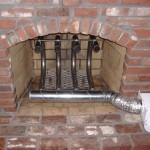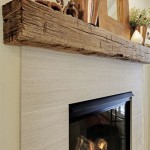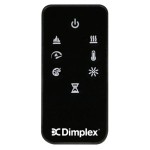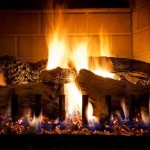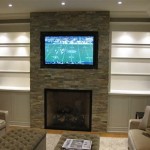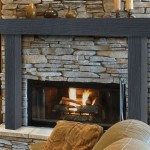Built-In Wall Fireplace Units: A Comprehensive Guide
Built-in wall fireplace units have become increasingly popular in modern homes, offering a combination of aesthetic appeal and functional heating. These units are integrated directly into the wall structure, creating a seamless and space-saving design element. This article explores the various aspects of built-in wall fireplace units, including their types, benefits, installation considerations, and maintenance requirements.
The allure of a fireplace often extends beyond its practical function. It can serve as a focal point in a room, adding warmth and ambiance to a living space. Built-in wall fireplaces, in particular, offer a sleek and contemporary alternative to traditional freestanding models. By integrating the fireplace into the wall itself, homeowners can maximize floor space and create a cleaner, more streamlined look.
Types of Built-In Wall Fireplace Units
Several types of built-in wall fireplace units are available, each with its own set of characteristics and advantages. The most common types include gas, electric, and wood-burning fireplaces.
Gas Fireplaces: Gas fireplaces are known for their convenience and ease of use. They typically operate on natural gas or propane and can be ignited with the push of a button or a remote control. Gas fireplaces offer consistent heat output and require minimal maintenance compared to wood-burning models. They also provide a realistic flame appearance, often enhanced by ceramic logs or glass stones. Venting options for gas fireplaces vary, including direct vent, vent-free, and B-vent systems. Direct vent fireplaces are considered the safest and most efficient option, as they draw combustion air from outside and exhaust fumes directly outdoors.
Electric Fireplaces: Electric fireplaces are an increasingly popular choice due to their versatility and ease of installation. They do not require venting or gas lines, making them suitable for a wide range of locations. Electric fireplaces operate by converting electricity into heat using a heating element. They typically feature realistic flame effects created by LEDs, providing a visual appeal without the need for actual combustion. Electric fireplaces are also energy-efficient, as they can be used to heat a single room without affecting the temperature of the entire house. They are generally considered a safe option, as they do not produce any emissions or pose a fire hazard.
Wood-Burning Fireplaces: Wood-burning fireplaces offer the traditional appeal of a real wood fire. They provide a crackling sound and a distinctive aroma that many find appealing. However, wood-burning fireplaces require more maintenance than gas or electric models. They necessitate the sourcing and storing of firewood, as well as regular cleaning to remove ash and soot. Wood-burning fireplaces also require a chimney for proper venting of smoke and combustion gases. In some areas, wood-burning fireplaces may be subject to regulations regarding emissions and air quality.
Beyond these primary types, some variations and hybrid models exist. For example, some electric fireplaces incorporate water vapor technology to create a more realistic flame effect, while others combine electric heating with a gas-fueled flame for enhanced ambiance. The optimal choice depends on individual preferences, budget considerations, and the specific requirements of the installation location.
Benefits of Built-In Wall Fireplace Units
Built-in wall fireplace units offer several benefits compared to traditional freestanding fireplaces or other heating solutions. These benefits extend to aesthetics, space utilization, efficiency, and safety.
Space Saving: One of the primary advantages of built-in wall fireplaces is their space-saving design. By integrating the fireplace into the wall structure, homeowners can reclaim valuable floor space. This is particularly beneficial in smaller homes or apartments where maximizing space is crucial. A built-in fireplace can also contribute to a cleaner, less cluttered look, as it eliminates the need for a bulky freestanding unit.
Enhanced Aesthetics: Built-in wall fireplaces can significantly enhance the aesthetic appeal of a room. They offer a sleek and modern look that complements a variety of interior design styles. The seamless integration into the wall creates a focal point that draws the eye and adds a touch of sophistication. Many built-in fireplaces offer customizable options, such as different flame colors, ember bed materials, and surround finishes, allowing homeowners to tailor the fireplace to their specific tastes.
Improved Energy Efficiency: Modern built-in fireplace units are often designed with energy efficiency in mind. Gas fireplaces can be equipped with features such as intermittent pilot ignition and variable flame height to minimize gas consumption. Electric fireplaces are particularly energy-efficient, as they only consume electricity when in use and can be programmed to maintain a desired temperature. Furthermore, both gas and electric fireplaces can serve as zone heating solutions, allowing homeowners to heat only the rooms they are using, rather than heating the entire house.
Increased Safety: Built-in wall fireplaces can also offer improved safety compared to traditional fireplaces. Many models feature safety features such as overheat protection, automatic shut-off mechanisms, and cool-to-the-touch glass. These features help to prevent accidents and ensure the safety of occupants, particularly children and pets. Direct vent gas fireplaces, in particular, offer enhanced safety by drawing combustion air from outside and exhausting fumes directly outdoors, minimizing the risk of carbon monoxide poisoning.
The combination of these benefits makes built-in wall fireplace units an attractive option for homeowners looking to enhance the comfort and style of their living spaces.
Installation Considerations for Built-In Wall Fireplace Units
The installation of a built-in wall fireplace unit requires careful planning and execution to ensure safety and proper functionality. Several factors must be considered before, during, and after the installation process.
Planning and Preparation: Before installing a built-in wall fireplace, it is crucial to assess the structural integrity of the wall and ensure that it can support the weight of the unit. It is also necessary to determine the appropriate venting requirements, if applicable, and to ensure that gas lines or electrical wiring are properly installed and accessible. In some cases, it may be necessary to obtain permits from local authorities before commencing the installation. Consulting with a qualified contractor or installer is highly recommended to ensure that all necessary precautions are taken and that the installation complies with local building codes.
Venting Requirements: The venting requirements for a built-in wall fireplace depend on the type of unit being installed. Gas fireplaces require venting to safely exhaust combustion gases outdoors. Direct vent fireplaces are the most common and efficient venting option, as they draw combustion air from outside and exhaust fumes directly outdoors through a sealed system. Vent-free gas fireplaces do not require venting, but they may not be permitted in all jurisdictions due to concerns about indoor air quality. Wood-burning fireplaces require a chimney for proper venting of smoke and combustion gases. Electric fireplaces, on the other hand, do not require any venting.
Electrical and Gas Connections: For gas fireplaces, a qualified gas technician must install the gas line and make the necessary connections. It is essential to ensure that the gas line is properly sized and that all connections are leak-tested. For electric fireplaces, a qualified electrician must ensure that the electrical wiring is adequate and that the unit is properly grounded. It is also important to follow the manufacturer's instructions regarding voltage and amperage requirements.
Framing and Finishing: The installation of a built-in wall fireplace typically involves framing the wall to create an opening for the unit. The framing must be sturdy and level to ensure that the fireplace is properly supported. Once the fireplace is installed, the surrounding wall can be finished with materials such as drywall, tile, stone, or wood to create a seamless and aesthetically pleasing look. It is important to choose materials that are fire-resistant and that complement the overall design of the room.
Proper installation is crucial for the safe and efficient operation of a built-in wall fireplace unit. Failure to follow proper installation procedures can lead to safety hazards, such as gas leaks, electrical shocks, or fires. Therefore, it is always recommended to hire a qualified professional to install the fireplace and to ensure that all necessary safety precautions are taken.
The installation process typically involves several steps. Initially, the appropriate location for the fireplace is identified, considering factors such as wall structure, venting possibilities, and proximity to gas or electrical connections. The wall is then prepared, which may involve removing existing drywall or framing. A custom frame is built to house the fireplace unit, ensuring it meets the manufacturer's specifications. For gas fireplaces, gas lines are run and carefully connected, followed by thorough leak testing. Electric models require electrical wiring and grounding. Finally, the fireplace unit is inserted into the frame, and the surrounding area is finished to create a seamless integration into the wall.
Following these steps ensures the fireplace functions safely and efficiently, providing years of warmth and ambiance.
Regular cleaning and maintenance are essential for keeping a built-in wall fireplace unit functioning properly and safely. The specific maintenance requirements vary depending on the type of fireplace.
For gas fireplaces, regular cleaning of the burner assembly and the glass front is necessary to remove dust and debris. It is also important to inspect the venting system annually to ensure that it is free of obstructions. A qualified technician should inspect the gas line and connections periodically to check for leaks. For wood-burning fireplaces, regular cleaning of the chimney is essential to remove creosote buildup, which can pose a fire hazard. It is also important to dispose of ashes safely and to inspect the firebox for cracks or damage. Electric fireplaces typically require minimal maintenance, but it is important to keep the unit clean and to ensure that the air vents are not blocked.
By following these maintenance guidelines, homeowners can ensure that their built-in wall fireplace unit remains a safe and reliable source of heat and ambiance for years to come.

Fireplace Cabinets Built In Wall Units Bookcases Around Fireplaces

White Living Room Wall Unit With Built In Television And Gas Fireplace Insert Combination Family Design Units

ᑕ❶ᑐ How Much Do Fireplace Built Ins Cost Get The Guide

Blue Lights Under My Built In Wall Unit With Electric Fireplace Living Room Decor Units Ins

Wall Unit With Fireplace Built In Tv Contemporary Living Room Las Vegas By Fairless Homes Llc Houzz

ᑕ❶ᑐ Difference Between Built In Fireplaces Freestanding Units

Recessed Or Wall Mount Electric Fireplace Installations Explained Touchstone Home S Inc

Tv Units With Built In Fires Solutions

Tv Units With Built In Fires Solutions

Touchstone Sideline Elite 60 In Smart Wall Mount Recessed Electric Fireplace Built Insert 80037 Fireplaces Depot
Related Posts

